Hoi An Ancient Town has many ancient and historic temples. One of them is the Lady Temple, a famous historical site. It is not only a sacred place for worship, but also a spiritual center for locals. The Lady Temple in Hoi An is also a popular tourist attraction and a hot check-in spot loved by visitors. Let’s explore this temple with Hoi An Travel Guide!
Table of Contents
Introduction to the Lady Temple in Hoi An:
Where is the Lady Temple located?
The Lady Temple is located in the center of the old town, on Hai Ba Trung Street, near the famous tourist attraction of Hoi An, the Japanese Covered Bridge. It is easy to find.
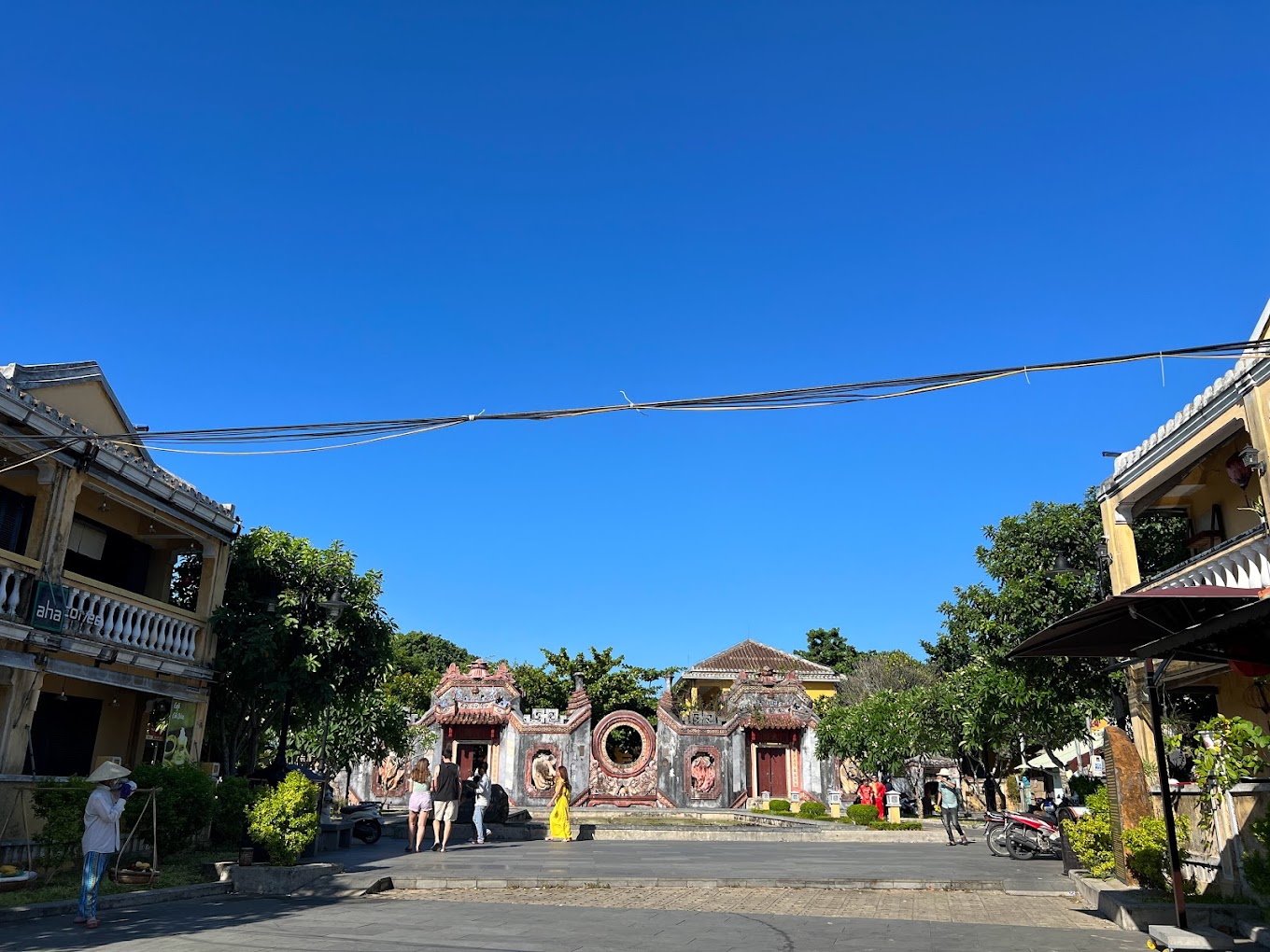
The temple is one of the long-standing historical sites, playing an important role in the spiritual life and beliefs of locals and tourists when visiting Hoi An.
Address: 675 Hai Ba Trung, Hoi An City, Quang Nam Province.
Why is it called the Lady Temple?
This temple was formerly known as Cam Ha Cung and Hai Binh Cung. Because the name was quite long, the locals abbreviated it and called it the Lady Temple for easy reading and remembering. This name has been passed down and used until now.
Who do people worship at the Lady Temple in Hoi An?
Like the Japanese Covered Bridge, the Lady Temple is called a temple but does not worship Buddha, but instead worships deities.
The left chamber of the temple is called Cam Ha Cung, where the Great Precious Saint and 36 statues representing 36 saints are worshipped, arranged in two rows. The right chamber worships Tho Ky and Minh Huong Ancestral Hall.
The Hai Binhh Cung area of the temple worships the Holy Mother Goddess Thiên Hậu, 12 Ba Mu, and the god statues Thiên Lý and Thuận Phong Nhĩ. And the religious belief and practice of worshipping here are still maintained to this day. They pray for a peaceful and happy life, as well as filial piety from their descendants
The history of Ba Mu Temple in Hoi An that you might not know.
Ba Mu Temple’s construction began in 1626 at a different location, before moving to its current position. However, it has undergone many changes over time, including the impacts of war and weather, and now only the entrance gate remains.
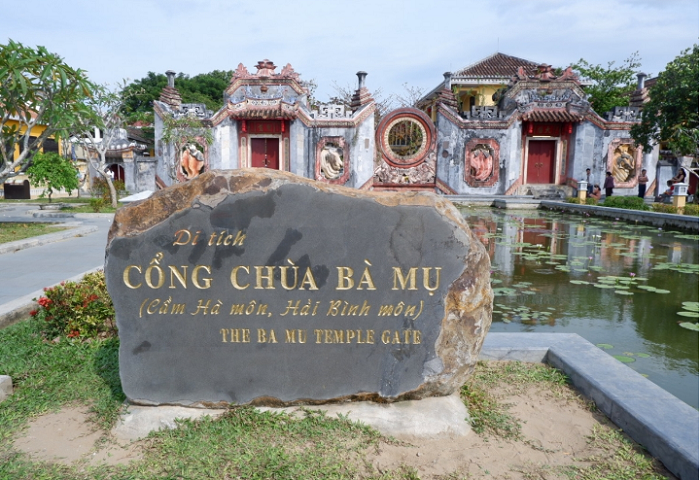
From 1848 to 1922, the temple was renovated on a larger, more magnificent scale. The Tam Quan Gate was the most important item, and the surrounding landscape was also preserved. The construction was completed for the last time in 2016.
This place has been evaluated by many domestic and foreign researchers as a unique architectural work of Quang Nam province. Therefore, Hoi An city has plans to preserve the temple.
Getting to Ba Mu Temple in Hoi An.
In this article, Danang Private Car’s will guide you on how to get from Danang city to Hoi An, then to Ba Mu Temple. You can choose one of the following methods:
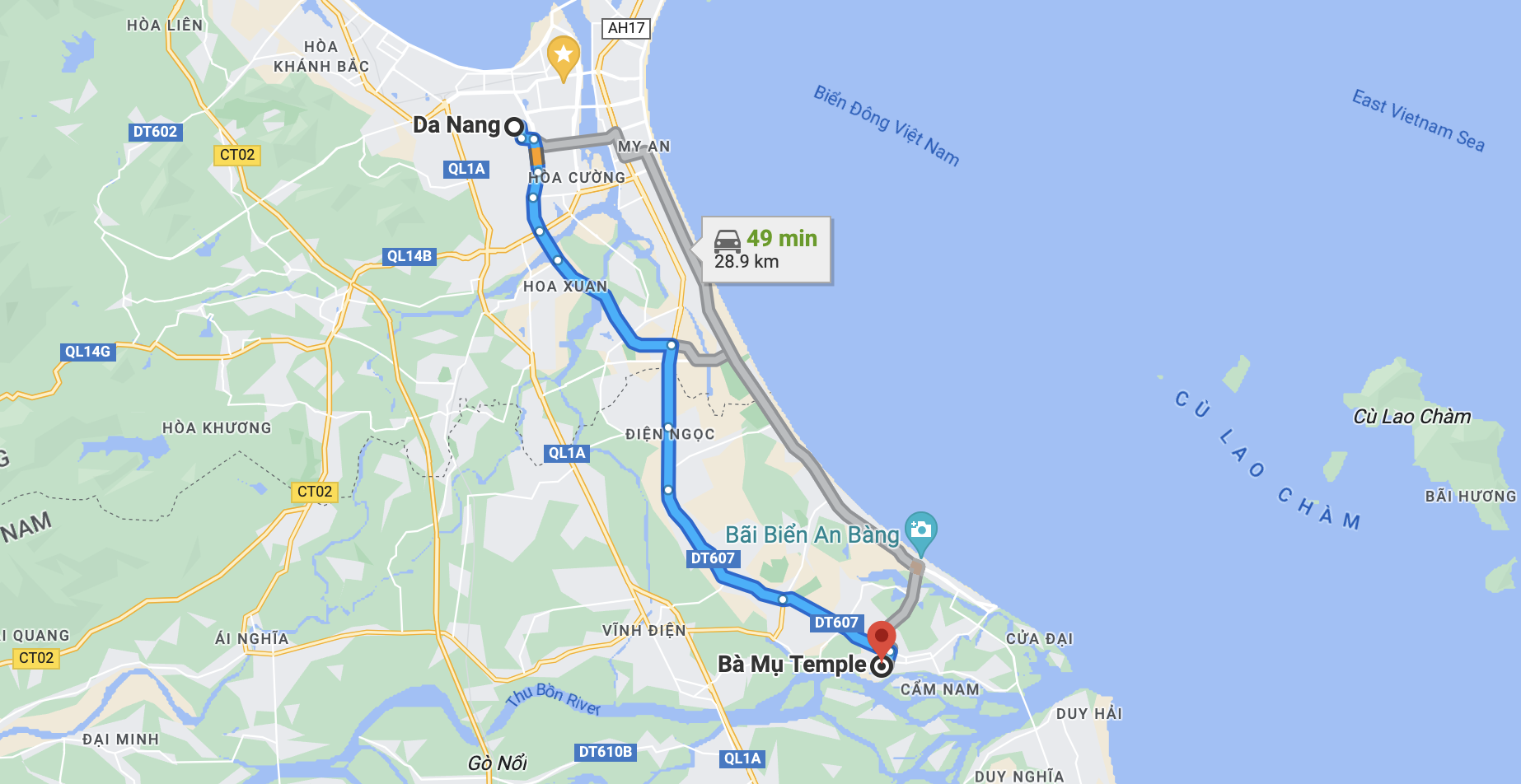
Travel by motorcycle/private car.
This is the most popular option for tourists, especially young people. Moving by personal vehicle allows you to be active, free, and comfortable. Motorbikes can be rented for prices ranging from 80-150k/day, while cars depend on the number of seats. Then choose one of the following three routes:
- Go along Truong Sa /Vo Nguyen Giap – Lac Long Quan and turn to Hoi An.
- Go along Le Van Hien, across Da Nang – Hoi An province road, go straight to the ancient town.
- Go along QL1A towards the south, across Vinh Dien road and turn left onto Huynh Thuc Khang street to enter Hoi An city.
Travel by private car
Our private car service provides transportation from Danang to Hoi An or you can book a one-day trip, where the driver will pick you up in Danang and take you to Hoi An. The driver will wait for you to explore Ba Mu Temple and other places you want to visit. When you’re ready to return to Danang, our driver will be ready to pick you up.
Book our one-way or two-way trip to Hoi An now. Da Nang To Hoi An Private Car – Da Nang To Hoi An Day Trip
Travel by taxi
If you choose to travel by taxi, you don’t need to worry about the route, as the driver will take you directly to Ba Mu Temple in Hoi An. The trip takes about 45-50 minutes and is suitable for groups of 4-7 people, families with elderly or young children.
However, the cost of a taxi is quite high compared to the other options, usually ranging from 350-450k/one way.
Moving by bus
In case you don’t have or can’t rent any other means of transportation, you can take the bus. From Da Nang, there are buses to Hoi An every 20 minutes, starting from 5:30 am daily.
To take the bus to Hoi An, you go to the waiting station and take bus number 1. After arriving at Hoi An bus station, you just need to travel an additional 10 minutes to reach the temple.
Are you looking for a tourist transportation service in Hoi An? Hoi An Private Car will help you with that. You don’t need to worry about catching a difficult taxi or finding public transportation when you arrive in Hoi An. Our service will take you everywhere in Hoi An at an affordable price with professional drivers, providing you with a wonderful journey.
The best time to check-in at Ba Mu Pagoda in Hoi An.
Ba Mu Pagoda is considered a very hot “instagrammable” spot. Here, you can take thousands of stunning pictures that will receive millions of likes. However, to get the best shot, you need to choose the right time.
As the check-in location is mostly outdoors, it is definitely not advisable to visit during the rainy season. You should choose sunny days from March to August, or even September. At this time, the dry weather, golden sunlight, and clear blue sky will make your pictures brighter and more beautiful.

However, do not visit during midday as the sunlight in the central region can be quite intense, and it is easy to get overexposed. Go in the morning before 10am or in the afternoon from around 3pm. If you can take pictures at sunset, that would be even more wonderful.
Opening hours and ticket prices for Ba Mu Pagoda in Hoi An.
This information is for those who want to know the opening hours and ticket prices to visit and check-in at Ba Mu Pagoda.
Opening hours.
Ba Mu Pagoda is open every day, and there is no regulation on closing time. Therefore, you can visit this temple at any time you want. However, if your purpose is to “instagram,” it is best not to go in the evening.
Does Ba Mu Pagoda have an entrance fee?
As a tourist destination and a super hot check-in location, Ba Mu Pagoda does not charge an entrance fee. It is completely free. The only exception is the sites located within the precincts of the Hoi An ancient town, where you must buy a ticket for 80,000 VND per person.
With exquisitely carved walls, paper flower clusters, and a serene lake reflecting against the deep blue sky, Ba Mu Pagoda is a standout attraction that draws many visitors to admire and check-in.
The check-in corners of Ba Mu Pagoda in Hoi An are always a great spot for beautiful photos.
Ba Mu Pagoda is famous for being a super hot Instagram spot that young people rush to check-in. Do you know which corners are the best for taking beautiful photos?
The lake in front of Ba Mu Pagoda – a dreamy check-in view.
The first thing that will leave you amazed when you arrive here is the spacious and open space of the lake. In the middle of the lake, there are gunflowers, and on both sides of the path are rows of green trees and a long stretch of grass, creating an extremely eye-catching atmosphere.

As the sunset approaches, the red hue of the sun reflects on the lake, looking like a painting. You can choose this time to take photos, and they will turn out beautifully.
Tam Quan gate – a million-view Instagram spot.
Tam Quan gate is a prominent highlight of Ba Mu Pagoda in Hoi An. The gate has ancient architectural features, with intricate carved patterns and colorful paint on the outside. It creates a luxurious background where you can just stand and have a beautiful photo without much editing.
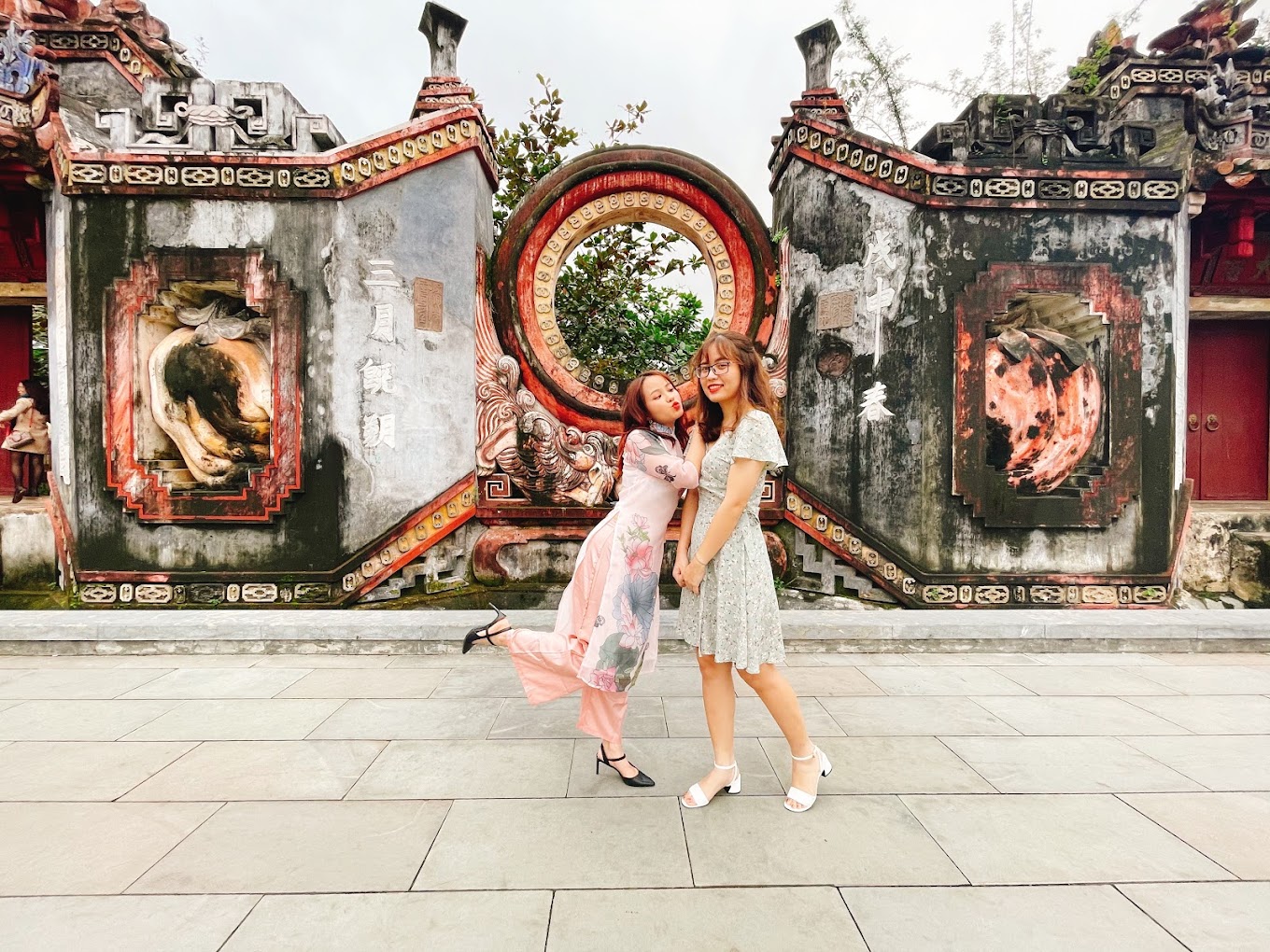
Overall, the landscape of the pagoda is undoubtedly the most valuable check-in point, and the Tam Quan gate leaves a strong impression on anyone who comes here.
Ba Mu Pagoda gate – an ancient background for Instagram.
In addition to the central part of the gate (Tam Quan gate), Ba Mu Pagoda also has a rebuilt gate based on the architecture of traditional ancient temples. With a Vauban tiled roof and colorful paint, it creates an eye-catching background for tourists’ photos.

Therefore, don’t forget to take photos in this corner, where the ancient features make for an ideal Instagram background. Your photos will look super cute!
See More: Introducing Hoi An Ancient Town – Unesco recognized as a world heritage
Specialties to try when visiting Ba Mu Temple in Hoi An.
While visiting and taking photos is the main attraction, don’t forget to try some of the local specialties around the area. You’ll miss out on some of the fun if you skip these dishes.
Mango cake.
This is a famous cake in Hoi An and is considered a delicacy. Mango cake is made from glutinous rice, which gives it a white and delicate crust. The filling is made from green beans and peanuts, giving it a chewy and fragrant taste. It also has a sweet flavor from sugar and a slight spiciness from ginger.
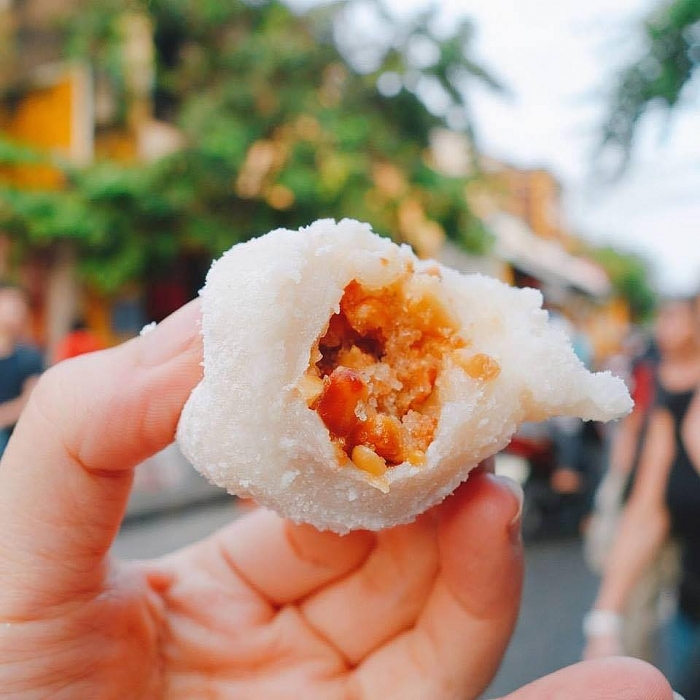
This seemingly simple cake leaves a lasting impression. You can buy mango cake right outside the temple gate and sit on the stone benches around while enjoying the cool breeze. The price is around 5k/cake.
Baked sweet potato cake.
From Ba Mu Temple in Hoi An, walk a little further and you’ll see small roadside stalls selling baked sweet potato cakes. This is also a popular street food in Hoi An, with a unique and tempting taste.
The round and lovely cakes are baked on charcoal, giving them a fragrant and crispy texture mixed with the sweet and chewy taste of sugar-coated sweet potatoes. Anyone who tries them will love them.
Mot Hoi An drink.
When eating, you must also drink. Although there are many drink options, don’t forget to try Mot Hoi An drink. It’s sold near the baked sweet potato cake stalls for a very cheap price of 10k/cup.
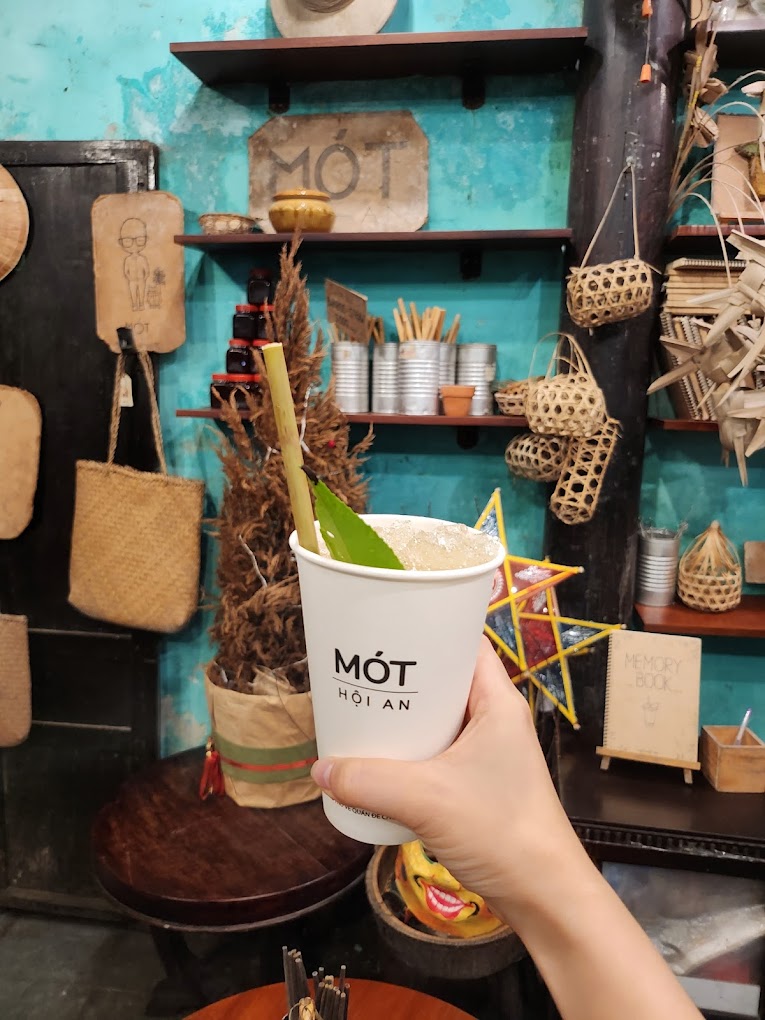
Mot drink in Hoi An is made from main ingredients such as lemon, ginger, lemongrass, dried green tea, chrysanthemum flowers, honey, and more, which are good for health, so it’s also called herbal tea or lemon lemongrass drink.
Notes for visiting the Ba Mu Pagoda in Hoi An.
- This is a spiritual and solemn place, so you should dress respectfully and modestly. Avoid wearing overly short or flashy outfits that may detract from the traditional beauty of the pagoda.
- Although not a Buddhist temple, the Ba Mu Pagoda worships gods and requires quietness. You should walk lightly, speak softly, avoid joking around, and not speak too loudly and impolitely.
- If you want to take pictures, you can choose one of the two recommended times, either in the morning or late afternoon. If you visit to seek good luck, peace, and enjoy the fresh atmosphere, it is better to go on weekdays when there are fewer visitors.
- If you visit during the hot summer, remember to bring a coat, hat, and umbrella. Some may use props for Instagram shots, but it’s more important to avoid the scorching sun in Central Vietnam.
- You can bring some drinking water and snacks to avoid hunger. The pagoda does not prohibit eating and drinking, but please remember to clean up after use.
Although not a new destination, the Ba Mu Pagoda’s attraction has not diminished. Almost everyone who visits Hoi An takes the time to come here to admire its beauty and take some pictures. If you are a fan of “Instagrammable” spots, Hoi An Travel Guide thinks you cannot miss the Ba Mu Pagoda, where you can take hundreds of stunning pictures.

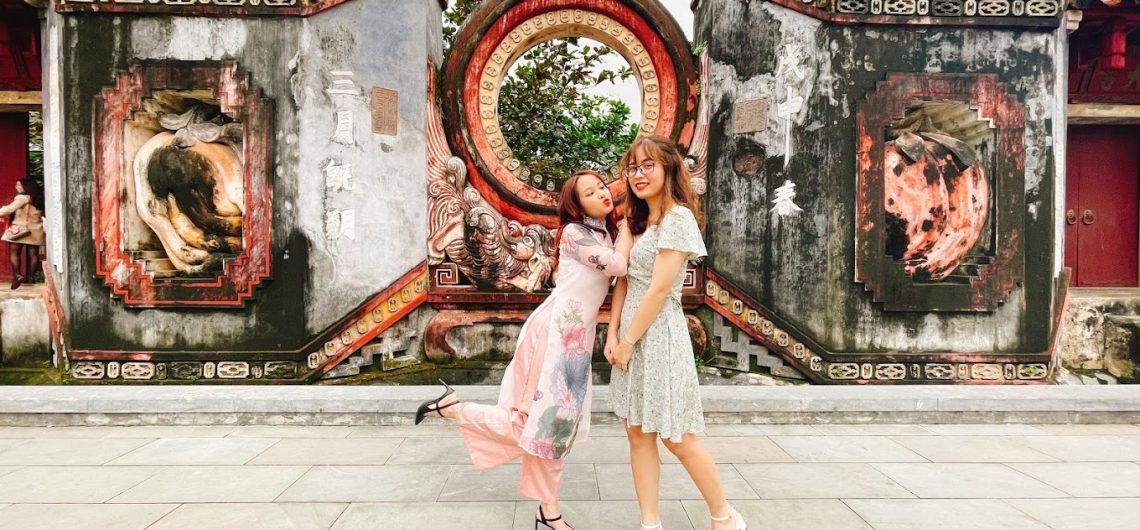
Comments